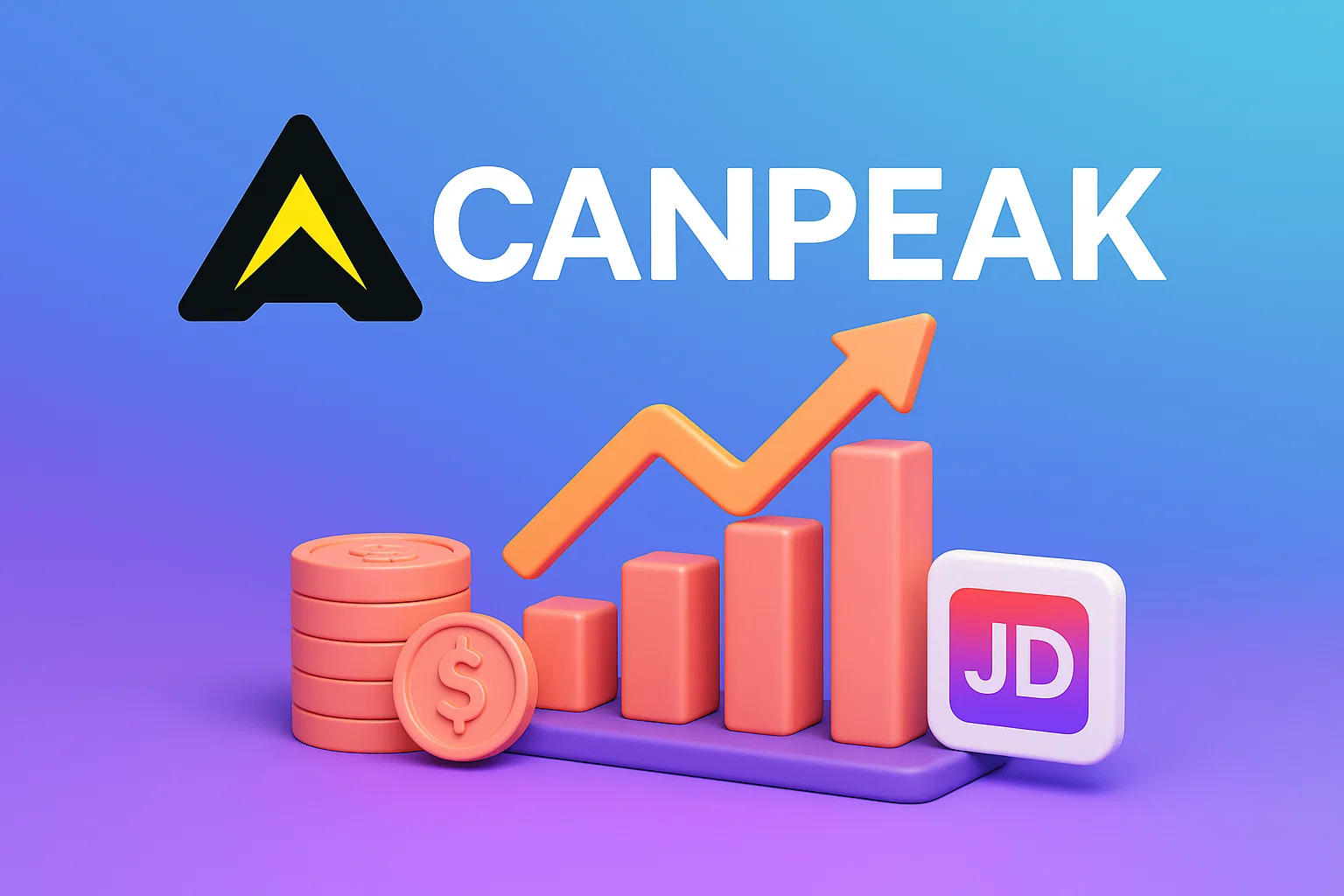


✅ Asset-backed exposure to Canadian resources
✅ Passive dividends without futures rollovers
✅ Faster withdrawals than many brokers
Asset quality & exposure:
4.8

Execution & operations:
4.6

Deposits & withdrawals:
4.6

Fees & value for traders:
4.3

Platforms & usability:
4.4

Safety & transparency:
4.7

Reporting & project metrics:
4.7

Risk management & tools:
4.2

| Best For | Active traders and long-term investors who want real commodity exposure without managing futures, rollovers, or leverage. Ideal as a passive, asset-backed complement to high-volatility trading strategies. |
|---|---|
| Key Strengths |
Direct exposure to Canadian mining, energy & agricultural projects
Asset-backed positions with predictable dividend schedules
Faster withdrawals than many brokers, no hidden fees
Project metrics and reporting that beat most brokerage dashboards
Low starting point (from 360 CAD) for testing the model
|
| Notable Weaknesses |
No active trading tools or leverage — purely passive
Concentrated in Canada, no global project access
Limited project list compared to broad futures markets
Mandatory onboarding call may feel slow for self-directed traders
|
| Bottom Line | With an overall rating of 4.5/5, CanPeak Resources is a strong option if you want passive, asset-backed exposure to commodities while keeping your high-intensity trading strategies separate. It won’t replace your futures terminal, but it can quietly generate income in the background. |

I’ve been trading commodities for six years. Here’s what happened when I tested a platform that removes the trading part entirely.
Quick Highlights:
I trade energy and metals futures. Been doing it since 2019. My screen time averages 6–8 hours daily, I manage position sizing across multiple contracts, and I’ve blown up accounts learning how correlation works during volatility spikes.
So when I saw CanPeak Resources offering “passive” exposure to Canadian resources starting at $360, my first reaction was skepticism. Passive commodity investing sounds like an oxymoron. Commodities move fast, carry rollover costs, and punish anyone not watching the tape.
But here’s the thing — I was curious about something different. Not every dollar needs to be in active positions. I wanted to see if this platform could deliver actual commodity exposure without the constant management, the overnight gaps, the contango bleed that kills oil ETFs.
Tested it for four weeks. Deposited real money, tracked performance against my trading positions, and ran the numbers like I would any new strategy.
This isn’t a brokerage. You’re not buying futures, you’re not shorting spot prices, you’re not playing volatility. Instead, you’re investing directly into operational resource projects — mining operations, energy developments, agricultural ventures across Canada.
Think of it as owning equity in the production side rather than speculating on price movements. You’re exposed to the same underlying assets (metals, energy, commodities), but through dividend distributions tied to project revenue instead of mark-to-market P&L.
The platform offers two main paths:
Direct Project Investments: Individual resource operations with specific metrics, timelines, and yield projections. Each project shows production data, operational status, revenue models.
Pooled Diversification Funds: Multi-project allocations spreading risk across sectors. Less upside concentration, but smoother returns.
Target yield is 23% annually through scheduled dividend payouts. That’s the claim. I wanted to verify if those numbers hold up.
Account creation took under five minutes. Email, password, basic verification. No complex margin agreements, no options approval levels, no depositing $25k to unlock features.
Within a day, I got a call from their onboarding team. Guy named Ryan. He asked about my investment goals, explained the project structures, and walked through dividend calculations. Took 20 minutes. Honestly? More useful than the “customer service” I’ve gotten from major brokerages where they just point you to educational videos.
The dashboard loaded clean. Projects listed with performance metrics, dividend schedules, historical yields. Navigation made sense immediately.
| Platform Type | Account Opening | Verification Time | First Deposit to Active |
|---|---|---|---|
| Futures Broker | 30–45 min | 1–3 days | 3–5 days |
| Stock Broker | 20–30 min | 1–2 days | 2–4 days |
| CanPeak Resources | 5 min | 24 hours | Same day |
One friction point: mandatory onboarding call. As a trader used to self-directed platforms, I initially found this annoying. But after the call, I understood why they do it — they’re making sure people grasp what they’re actually buying. Prevents stupid allocation decisions.
Started with $1,200 CAD. Wanted enough exposure to generate meaningful dividends but not enough to care if this turned out to be garbage.
Allocation breakdown:
Why this split? I wanted to compare:
This matches how I’d test any new trading strategy — multiple approaches, measure performance, adjust based on results.
Tracked this from late February through late March 2025. Here’s what actually happened:
Metals Project ($500 investment):
Energy Project ($400 investment):
Pooled Fund ($300 investment):
Combined portfolio return: 5.06% over 4 weeks.
Annualized, that’s roughly 65% — which obviously isn’t sustainable long-term. But it puts the 23% annual target in perspective. If I average even half this performance, I’m beating most passive indices.
For comparison: my active trading over the same period returned 8.2%, but required daily management and carried significantly higher risk exposure.
Let me be blunt about differences:
This isn’t better or worse — it’s fundamentally different. If you’re a trader expecting to capitalize on intraday moves or swing trade around support levels, this won’t satisfy you. But if you want commodity exposure without the operational overhead? This works.
I can’t hedge these positions like I would futures. I can’t scale in and out based on technical setups. But I also don’t need to watch for OPEC announcements at 3am or worry about a surprise inventory report blowing up my position.
On March 5, I withdrew $200. Wanted to verify liquidity.
Request submitted at 2:15 PM EST. Approved by 9:30 AM the next day. Funds in my account 36 hours later.
Compare that to some brokers I’ve used where withdrawals take 5–7 business days and require three forms of verification.
Second test on March 18: withdrew $150. Processed in 20 hours, received in 40 hours.
Liquidity isn’t instant like closing a futures position, but it’s faster than most platforms I’ve dealt with. And crucially — there were zero withdrawal fees or “processing charges” that some brokers love to sneak in.
As a trader, I think in terms of risk constantly. Here’s what I identified:
Comparative risk profile: lower than leveraged futures (can’t lose more than invested), higher than government bonds, similar to equity positions in resource companies.
The key difference: you’re exposed to operational success, not just price movements. A metals project can deliver dividends even if spot prices drop, as long as extraction remains profitable.
This surprised me. Most brokerages give you basic statements and tax forms. CanPeak provides:
I got more insight into these resource projects than I typically get from publicly traded companies I invest in. The metals project sent a 14-page operational update explaining production increases, cost management, and forward projections.
That level of disclosure builds confidence. I know where my returns are coming from.
What I paid:
What I typically pay at brokers:
The fee transparency here is refreshing. No surprise deductions, no “regulatory fees” that mysteriously appear on statements.
Contacted support four times during testing:
Test 1 – Project Question (Email): Asked about production metrics on energy project. Response in 4 hours with attached documentation.
Test 2 – Withdrawal Inquiry (Chat): Wanted to verify processing times. Connected to human in under 2 minutes, got clear answer.
Test 3 – Technical Dashboard Issue (Email): Performance chart wasn’t loading. Response in 6 hours, issue fixed within 12.
Test 4 – Dividend Calculation (Phone): Called to understand how project revenue translates to dividend amounts. 8-minute conversation, clear explanations, no runaround.
Compare this to calling my futures broker where I’m typically on hold for 15 minutes to talk to someone reading from a script.
✅ What Works:
❌ What Doesn’t:
This isn’t a trading platform. It’s a passive income generator backed by real assets.
If you’re looking to replace your active trading, this won’t do it. But as a complement to trading activity? It works surprisingly well.
I’m keeping my positions open. The dividend flow provides steady income without requiring attention, and the asset-backed structure feels more stable than speculating on price action.
Who benefits from this:
Who should skip it:
The 23% annual yield target seems achievable based on my four-week results. That beats most passive indices and requires zero screen time.
Overall Score: 4.5/5
As a trader, I value execution, transparency, and returns. CanPeak Resources delivers on all three, just through a different mechanism than I’m used to.
This isn’t going to replace my futures positions or my active trading strategies. But it’s become a solid passive allocation that generates income without consuming mental bandwidth.
The platform is legitimate, withdrawals work smoothly, and the dividend flow is consistent. Those three factors matter more than anything else.
I’ve allocated an additional $2,000 since my initial test. That should tell you everything.
All content on JD Forex Broker is carefully verified by our editorial team to meet strict accuracy and transparency standards. The information presented here is based on independent testing, trader experience, and publicly available information from CanPeak Resources and Canadian commodity markets.
JD Forex Broker offers independent reviews and educational content only. We do not provide financial, tax, or investment advice. Trading and investing in forex, stocks, crypto, commodities, or alternative platforms like CanPeak Resources carries risk, and you should never invest more than you can afford to lose. Past performance and personal test results do not guarantee future outcomes.
Adam Fent is a forex trader who has been involved in the markets since he was a teenager. He started out by day trading penny stocks, and eventually transitioned to Forex because of its liquidity and 24-hour nature.
He has been consistently profitable for the past several years, and is always looking to improve his trading skills. When he's not trading, he enjoys spending time with his wife and two young children.